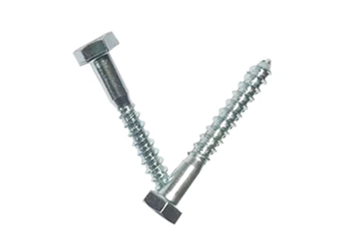Dec . 09, 2024 16:19 Back to list
Innovative Designs for Bolt Anchor Shackles in Heavy-Duty Applications
The Bolt Anchor Shackle A Key Component in Heavy-Duty Applications
In the world of heavy-duty applications, the importance of strong, reliable components cannot be overstated. One such component that has gained prominence in various industries is the bolt anchor shackle. This piece of hardware, though small in size, plays a colossal role in ensuring safety and efficiency in lifting, towing, and rigging operations.
What is a Bolt Anchor Shackle?
A bolt anchor shackle, often simply referred to as a shackle, is a U-shaped device used to connect two or more components, typically for the purpose of lifting or securing loads. It consists of a metal body and a pin or bolt that can be threaded through the shackle to create a closed loop. This design allows for quick connections and disconnections, which is crucial in dynamic environments where time is of the essence.
There are various types of shackles, but bolt anchor shackles stand out due to their robustness and reliability. Unlike traditional shackles that use a clevis pin, bolt shackles provide enhanced security as they are less likely to accidentally disengage or come loose under load. This makes them an ideal choice for applications involving heavy lifting or critical safety operations.
Applications of Bolt Anchor Shackles
The versatility of bolt anchor shackles makes them suitable for a wide range of applications across multiple industries
. In construction, they are used to lift heavy materials such as steel beams, concrete blocks, and more. The ability to withstand considerable loads without deformation is vital in ensuring the safety of ongoing construction projects.In marine settings, bolt anchor shackles are frequently employed to secure boats and other watercraft. They connect mooring lines, anchor chains, and various rigging components, helping to ensure that vessels remain securely fastened against the forces of wind and tide. The corrosion-resistant materials used in manufacturing these shackles also make them suitable for marine environments where exposure to saltwater can be a concern.
bolt anchor shackle

Furthermore, in the field of logistics, these shackles are used for securing cargo during transportation. The ability to quickly and efficiently attach or detach loads ensures that shipping processes remain efficient and safe. Additionally, in rescue operations, bolt anchor shackles are essential for securely lifting individuals or loads in emergency situations, further underscoring their importance in life-saving scenarios.
Choosing the Right Bolt Anchor Shackle
When selecting a bolt anchor shackle, several factors must be considered to ensure optimal performance. First and foremost, the working load limit (WLL) of the shackle should match or exceed the anticipated load it will bear. Overloading a shackle can lead to catastrophic failure, posing serious risks to both personnel and equipment.
Material selection is also critical. Common materials include galvanized steel for corrosion resistance and stainless steel for enhanced strength and durability. Depending on the environmental conditions—such as exposure to chemicals, saltwater, or extreme temperatures—choosing the right material can significantly extend the lifespan of the shackle.
Additionally, the size and shape of the shackle should be appropriate for the application. A larger shackle may be needed for heavier loads, while smaller shackles may suffice for lighter tasks. Consulting with experts or referencing manufacturer specifications can help in making informed decisions.
Conclusion
In summary, the bolt anchor shackle is an indispensable component in various heavy-duty applications, from construction and marine operations to logistics and rescue missions. Its design, featuring a secure connection and high load-bearing capacity, ensures that safety and efficiency remain paramount in all operations. As industries continue to evolve and demand more from their equipment, the bolt anchor shackle will undoubtedly remain a crucial player in the world of heavy-duty hardware.


